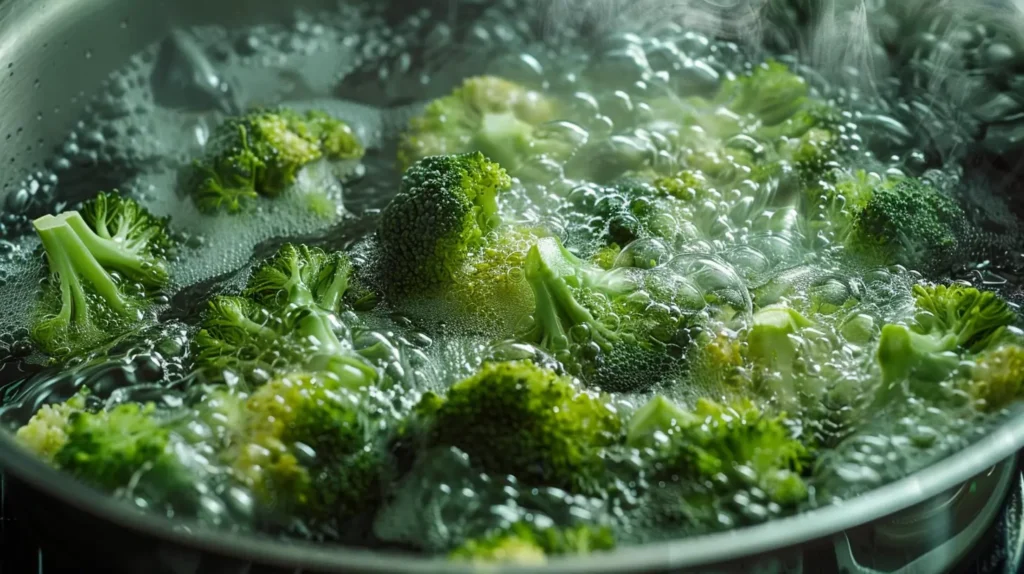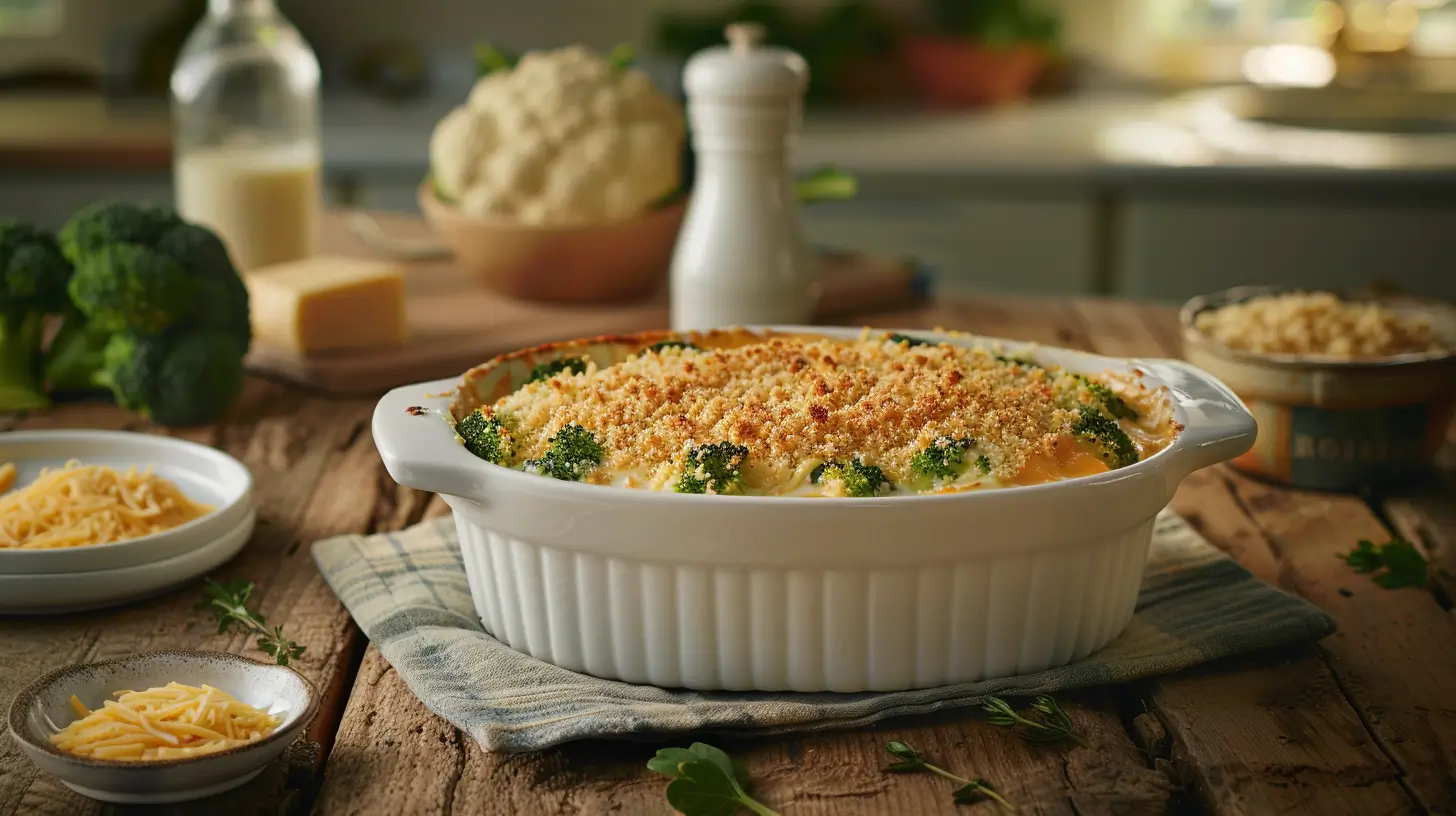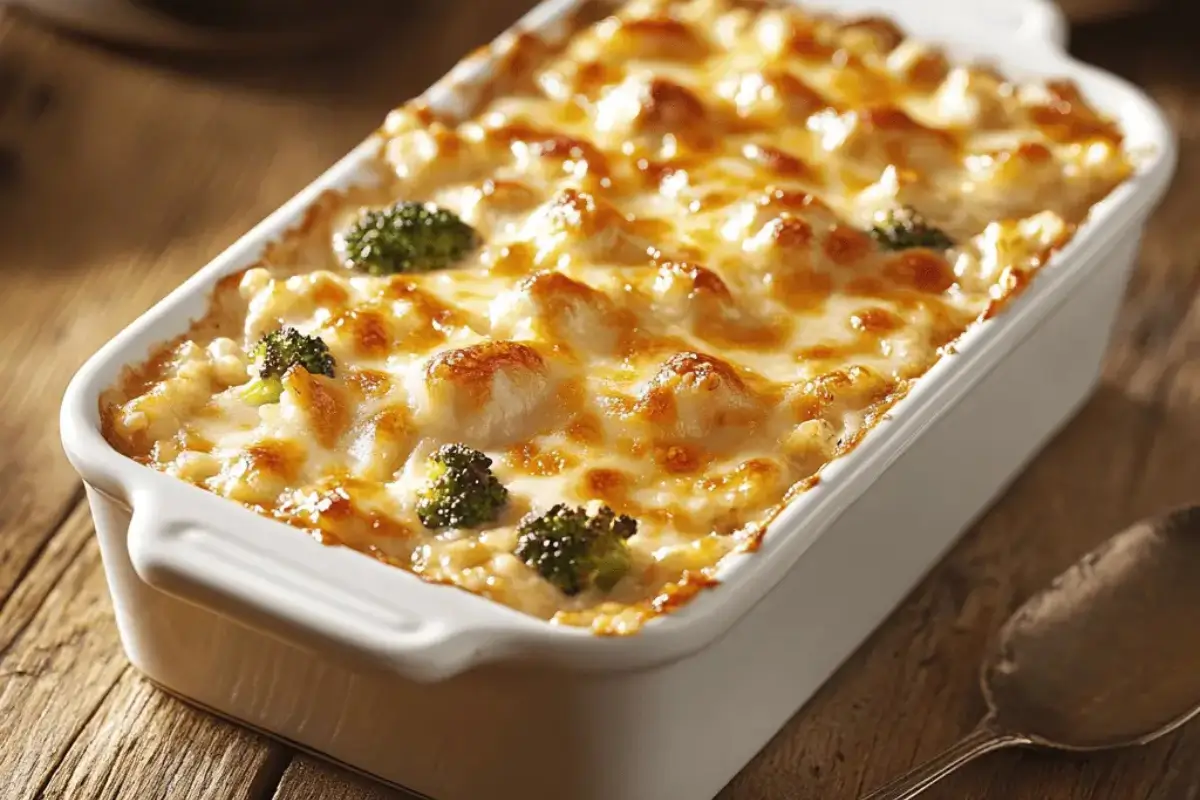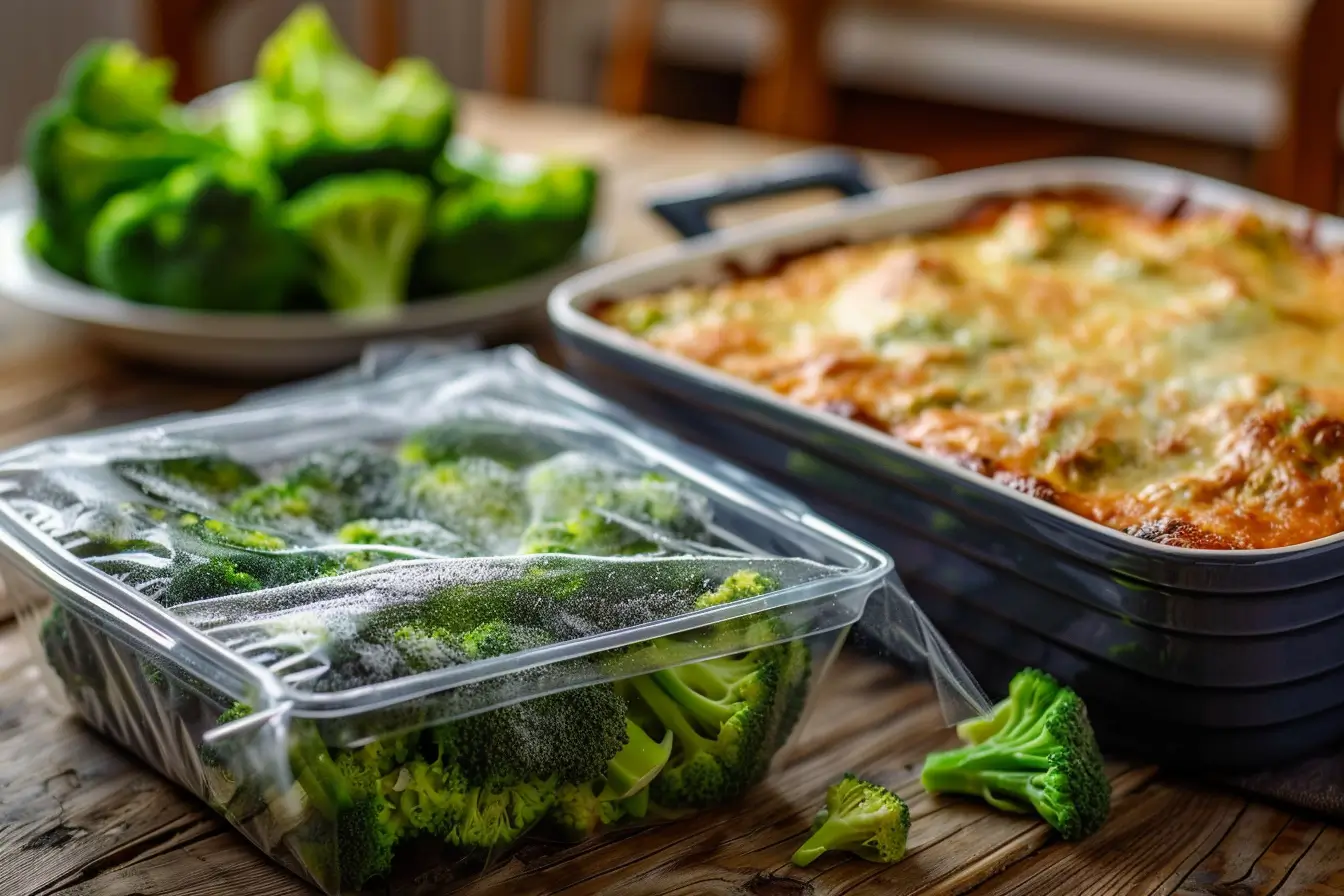Discover why your broccoli cheese casserole turns watery and learn practical tips to fix and prevent it. Perfect casseroles every time!
Introduction
If you’ve ever faced the frustration of a watery broccoli cheese casserole, you’re not alone. This common issue can ruin the texture and flavor of an otherwise delicious dish. Fortunately, understanding why it happens and how to fix it is easier than you think. By mastering a few kitchen techniques and being mindful of ingredient choices, you can ensure that your casseroles turn out perfectly every time. In this article, we’ll dive into the causes of watery casseroles, practical tips for prevention, and solutions for salvaging your casserole. Let’s get cooking!
Common Causes of a Watery Broccoli Cheese Casserole
Cooking a broccoli cheese casserole involves a delicate balance of ingredients and preparation techniques. Here are the most common culprits that lead to a watery dish:
Improperly Cooked Broccoli: A Key Reason for Watery Broccoli Cheese Casserole
One of the main reasons for a watery casserole is the broccoli itself. If broccoli isn’t cooked or prepped correctly, it releases too much water into the dish.
- Over-steaming or undercooking: Over-steamed broccoli becomes mushy and waterlogged, while undercooked florets release water during baking. This often happens because broccoli retains water in its stems and florets if not handled properly.
- Frozen broccoli: If you use frozen broccoli without thoroughly thawing and draining it, excess moisture will seep into your casserole. Allow it to defrost fully in the refrigerator, then pat it dry to remove all surface water.
To prevent this, ensure your broccoli is properly cooked, drained, and patted dry before adding it to the casserole. Consider lightly roasting your broccoli for an added layer of flavor and less moisture.
Excess Water from Ingredients: Common in Watery Broccoli Cheese Casserole
Certain ingredients bring more water than necessary into the dish, contributing to a soggy outcome.
- High-moisture cheese: Using cheeses with a high water content, like mozzarella or ricotta, can lead to a watery casserole. Always opt for shredded, low-moisture options.
- Condensed soup or milk: Adding too much liquid without proper thickening can make the sauce runny. Overestimating quantities of milk or cream is a common mistake, so stick to recipe measurements.
Measure your ingredients carefully and opt for lower-moisture cheese varieties like cheddar or gruyere to keep things in check. Incorporating a small amount of cornstarch into your liquids can help stabilize the texture.
Mistakes in Sauce Preparation: A Broccoli Cheese Casserole Problem
The sauce is the heart of the casserole, and if it’s not thickened properly, you’re likely to end up with a watery dish.
- Rushing the roux: A roux, made from flour and butter, is essential for a creamy, thick sauce. Skipping or rushing this step leaves the sauce too thin and unable to bind other ingredients effectively.
- Insufficient cooking time: Letting the sauce simmer allows it to thicken and reduces excess moisture. Adding cheese too early can cause the sauce to separate, contributing to unwanted wateriness.
Take your time to prepare a robust, creamy sauce to hold the casserole together. If needed, let it cool slightly before combining with the other ingredients.
Preventing Watery Broccoli Cheese Casserole
Avoiding a watery broccoli cheese casserole begins with thoughtful preparation. By following these best practices, you can ensure a perfectly baked, rich, and creamy dish every time.

Preparing Broccoli: Essential for a Perfect Broccoli Cheese Casserole
Properly preparing broccoli is the first step to avoiding excess water in your casserole:
- Blanching instead of steaming: Blanch broccoli quickly in boiling water, then cool it in an ice bath. This method preserves texture while removing excess moisture. Blanching also helps maintain the vibrant green color of broccoli, enhancing the dish’s visual appeal.
- Dry thoroughly: After blanching, drain the broccoli well and pat it completely dry with paper towels. Even a small amount of leftover water can add up, so double-check for damp spots before assembling the casserole.
Ensuring your broccoli is dry prevents unnecessary liquid in your casserole.
Choosing the Right Cheese and Dairy: Key to Thick and Creamy Broccoli Cheese Casserole
The type of cheese and dairy products you use can greatly impact the casserole’s consistency:
- Opt for low-moisture cheeses: Cheddar, Parmesan, and Gruyere are excellent choices. Avoid high-moisture varieties like fresh mozzarella unless you drain and dry them thoroughly.
- Control your dairy ratio: Use heavy cream or evaporated milk instead of regular milk for a creamier and thicker sauce. Heavy cream also adds richness that compensates for reduced liquids.
Balancing the moisture levels in your cheese and dairy is key to a cohesive casserole. Adding a tablespoon of cornstarch or flour into the dairy mix can also provide extra thickening.
Assembling Your Casserole: Tactics for Avoiding Watery Results
Layering and assembling your casserole can also help manage moisture:
- Layering technique: Place broccoli evenly in the dish without crowding, allowing steam to escape as it bakes. Overcrowding leads to trapped steam, which results in a watery bottom layer.
- Avoid over-saucing: Add just enough sauce to coat the broccoli lightly. Too much sauce can make the dish soupy and overpower the cheese’s flavor.
These steps ensure that each component of your casserole bakes evenly. Additionally, bake the casserole uncovered for the last 10 minutes to allow steam to escape and firm up the top.
Tips for Freezing Broccoli Cheese Casserole
Freezing your broccoli cheese casserole can be a great way to meal prep, but it requires care to avoid a watery mess after reheating.
- Cool before freezing: Ensure the casserole is completely cool before placing it in the freezer. Trapped steam can create excess moisture. Cooling also preserves the casserole’s structure.
- Use airtight containers: Store the casserole in a tightly sealed container or wrap it well with plastic wrap and foil to prevent freezer burn. Dividing it into smaller portions helps with even reheating.
- Reheat properly: Thaw the casserole overnight in the refrigerator and bake uncovered to allow excess water to evaporate. Baking at a slightly lower temperature initially helps retain its texture.
Following these steps will help maintain the texture and flavor of your casserole.
Choosing the Right Baking Dish: A Crucial Factor in Broccoli Cheese Casserole Success
The type of baking dish you use can significantly impact the casserole’s consistency and moisture levels.
- Glass or ceramic dishes: These retain heat evenly but may hold onto moisture longer. Uncovering during the last 10 minutes of baking can help. Ceramic dishes are particularly good for keeping casseroles warm during serving.
- Metal pans: These heat quickly and can help reduce baking time, which prevents the dish from becoming soggy. They’re ideal for casseroles requiring a crispy top layer.
Consider your dish choice to enhance the texture of your casserole. Lining the dish with parchment paper can also make cleanup easier while preventing sticking.
Alternative Ingredients for a Healthier Casserole
If you’re looking to make your casserole healthier while maintaining flavor and texture, consider these substitutions:
- Low-fat cheese options: Swap full-fat cheese for reduced-fat versions to cut down on calories and moisture. Opt for sharp flavors to compensate for reduced fat content.
- Plant-based milk: Almond or cashew milk can be used instead of cream. Choose unsweetened varieties for the best results and avoid watery textures.
- Whole-grain breadcrumbs: For added fiber, use whole-grain breadcrumbs instead of traditional ones. A mix of breadcrumbs and finely chopped nuts can add crunch and flavor.
These alternatives can enhance the nutritional value of your casserole without sacrificing taste. Additionally, incorporating more vegetables like cauliflower or spinach can increase fiber and nutrients.
Fixing a Watery Broccoli Cheese Casserole
Sometimes, despite your best efforts, a casserole turns out watery. Don’t worry! Here are practical fixes to salvage your dish and ensure success next time.
Quick Fixes for an Already Watery Broccoli Cheese Casserole
If your casserole is already baked and watery, these immediate remedies can save the dish:
- Bake longer: Extend the baking time with the casserole uncovered. This allows excess liquid to evaporate. Start with 10-minute increments until desired consistency is reached.
- Add a thickener: Sprinkle grated cheese, breadcrumbs, or even a small amount of flour on top and bake. These will absorb the extra moisture.
- Drain the liquid: Carefully tilt the casserole dish and spoon out the excess liquid, then return it to the oven briefly. Use a turkey baster for precise liquid removal.
These quick tricks can salvage a watery casserole in no time.
Long-Term Solutions to Prevent Watery Broccoli Cheese Casserole
To avoid recurring issues, consider these adjustments:
- Improve your sauce: Use a thicker roux or cornstarch slurry during sauce preparation to create a firmer base. A higher ratio of cheese to liquid also improves consistency.
- Pre-cook ingredients: Ensure all components, especially broccoli, are cooked and dried before layering. Lightly roasting other vegetables like mushrooms reduces their water content.
- Reduce liquids: Experiment with reducing the amount of milk, cream, or condensed soup in the recipe. Use a liquid measuring cup for precision to avoid accidental over-pouring.
With these strategies, you’ll have consistently creamy casseroles that hold together beautifully.
Frequently Asked Questions
Why is my broccoli casserole watery?
A watery casserole often results from using ingredients with excess moisture, like improperly cooked broccoli or high-moisture cheeses. Another common issue is failing to thicken the sauce adequately before baking. Proper preparation and balanced ingredients are key to avoiding this problem.
What to do if your casserole is too watery?
If your casserole turns out watery, don’t panic! Uncover the dish and bake it longer to evaporate the extra moisture. Alternatively, sprinkle breadcrumbs or grated cheese on top to absorb the liquid. For extreme cases, carefully drain the excess liquid and return the dish to the oven.
How do you thicken broccoli casserole?
Thickening a broccoli casserole begins with the sauce. Start by creating a robust roux with flour and butter, or add a cornstarch slurry for extra firmness. Additionally, using low-moisture cheeses and pre-drying broccoli can help maintain a thick, creamy consistency.
How do you keep a casserole moist?
Keeping a casserole moist is about balance. Avoid overbaking, which can dry out the dish. Use just the right amount of sauce and ensure that the casserole is covered during part of the baking process to retain moisture. Removing the cover toward the end can create a crispy top without making the dish watery.
Conclusion
A watery broccoli cheese casserole might be a common frustration, but it’s entirely preventable with the right techniques. By understanding the causes—like improperly cooked broccoli or unbalanced ingredients—you can take proactive steps to achieve consistently creamy and delicious results.
Key Takeaways
- Always cook and thoroughly dry your broccoli before assembling the casserole.
- Use low-moisture cheeses and control liquid ingredients for a thicker sauce.
- If your casserole turns out watery, quick fixes like baking longer or adding breadcrumbs can save the dish.
With these tips in your culinary arsenal, you’ll be able to create perfect casseroles that are as satisfying as they are delicious.
What’s your go-to method for making a casserole? Share your experiences and tips in the comments below—I’d love to hear from you!
For more inspiration, check out our guide on Velveeta Broccoli Casserole for a cheesy twist on this classic dish!








